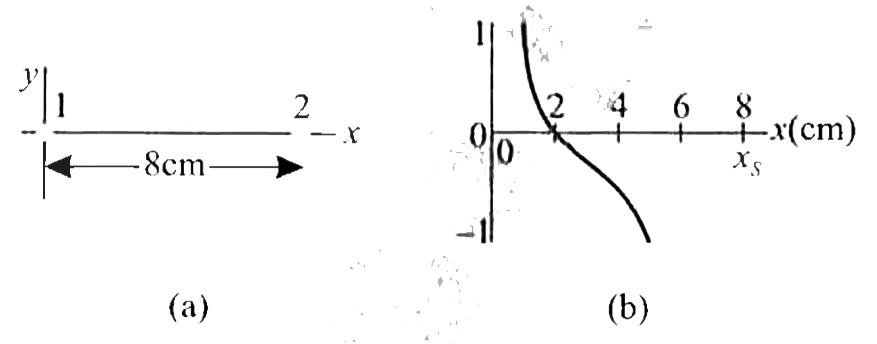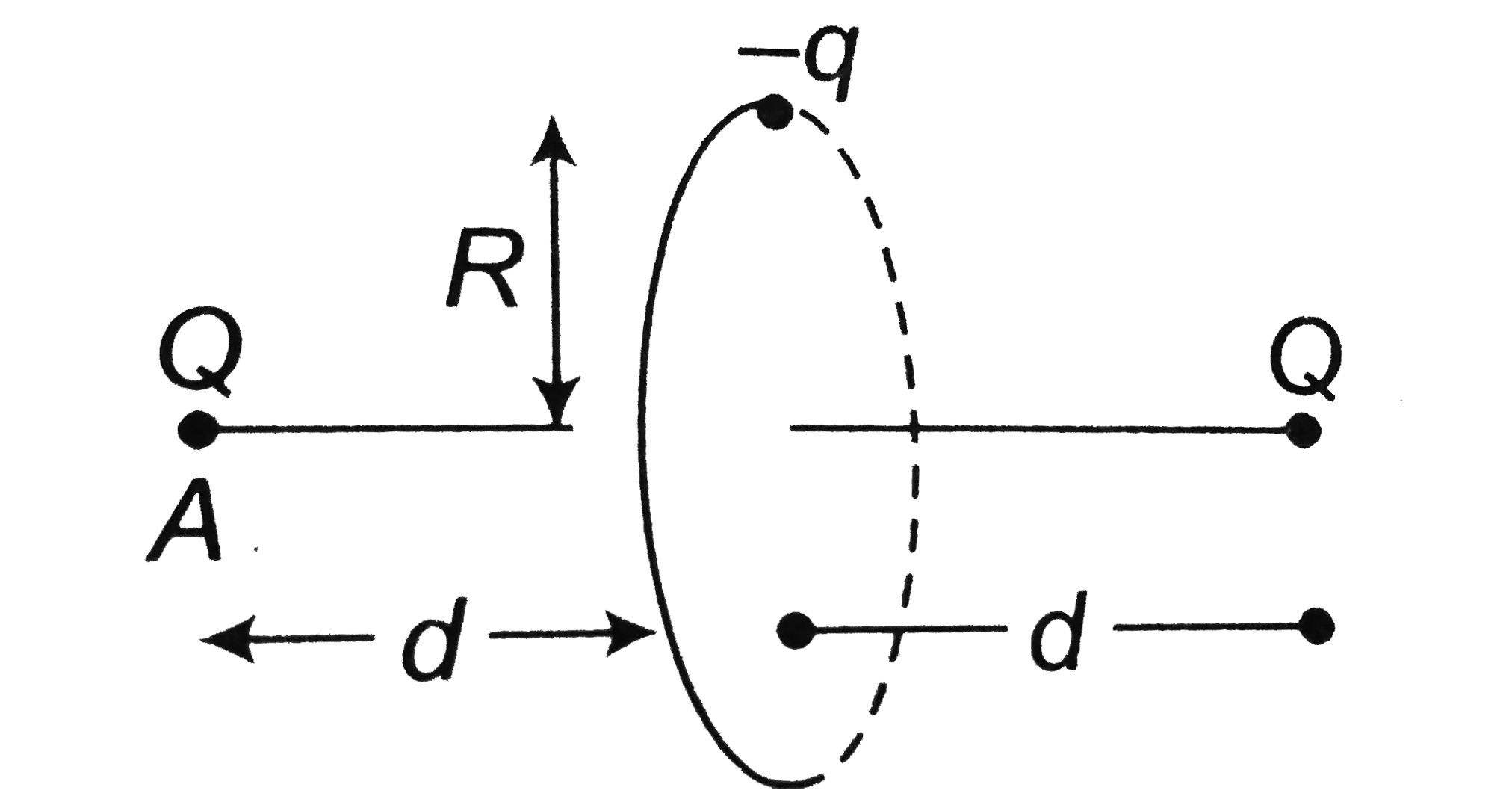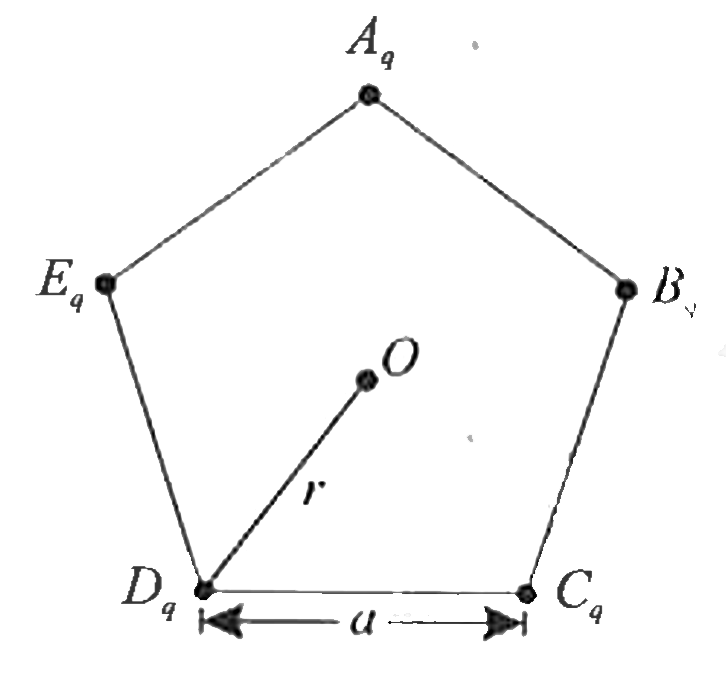Subjective Type from CENGAGE PHYSICS (ENGLISH) Chapter 5 COULOMB LAW AND ELECTRIC FIELD for Class 12
| Class 12 | PHYSICS |
| Chapter | COULOMB LAW AND ELECTRIC FIELD |
| CENGAGE PHYSICS (ENGLISH) | Subjective Type |
| Medium | English |
| Academic Year | 2023-2024 |
Question 2
A charged particle of radius 5×10−7m is located in a horizontal electric field of intensity 6.28×105Vm−1. The surrounding medium has the coeffecient of viscosity η=1.6×10−5Nsm−2. The particle starts moving under the effect of electric field and finally attains a uniform horizontal speed of 0.02ms−1. Find the number of electrons on it. Assume gravity free space. View SolutionQuestion 3
A glass rod rubbed with silk is brought close to two uncharged metallic spheres in contact with each other, inducing charge on them as shown in Figure (a) [given in the solution]. Discuss what happens when
(i) the shperes are slightly seprated
(ii) the glass rod is subvsequently removed, and finally
(iii) the spheres are separacted apart.View SolutionQuestion 4
Indentical isolated conduction sphers 1 and 2 have equal charges and are separated by a distance that is large compared with their diameters (Fig.a). The electrostatic force acting on spkhere 2 due to sphere 1 is F. Suppose now that a third identical sphere 3, having an insulation handle and initially neutral, is touched first to sphere 1 (Fig. b), then to sphere 2 (Fig. c), and dinally removed (Fig. d). The electrostatic force that now acts on sphere 2 has magnitude F'. What is the F'F?View SolutionQuestion 5
In Fig. a, particle 1 (of charge q1) and particle 2 (of charge q2) are fixed in place on an x axis, 8.00 cm apart.

Particle 3 (of charge q3=+8.00×10−19C) is to be placed on the line between particles 1 and 2 so that they produce a net electrostatic force Fnet=2F0 on it Figure b gives the x component of that force versus the coordinate x at which particle 3 is placed. The scale of the x-axis is set by xs=8.0cm. What are (a) the sign of charge q1 and (b) the ratio q2/q1?View SolutionQuestion 6
Figure (a) shows an arrangement of three charged particles separted by distance d. Particles A and C are fixed on the x-axis, but particle B can be moved along a circle centered on particle A. During the movement, a radial line between A and B makes an angle θ relative to the positive direction of the x-axis (Fig. b). The curves in Fig. c give, for two situations, the magnitude Fnet of the net electrostatic force on particle A due to the other particles. That net force if given as a function of angle θ and as a multiple of a basic amount F0. For example on curve 1, at θ=180∘ we see that Fnet=2F0. (a) For the situation corresponding to curve 1, what is the ratio of the charge of particle C to that of particle B (including sign)? (b) For the situation corresponding to curve 2, what is that ratio?
 View Solution
View SolutionQuestion 7
Two positive point charges each of magnitude 10C are fixed at positions A &B at a seperation 2d=6m. A negatively charged particle of mass m=90gm and charge of magnitude 10×10−6C is revolving in a circular path of radius 4m in the plane perpendicular to the line AB and bisecting the line AB. Neglect the effect of gravity. Find the angular velocity of the particle
 View Solution
View SolutionQuestion 8
Four point positive charges are held at the vertices of a square in a horizontal plane. Their masses are 1kg,2kg,3kg,&4kg. Another point positive charge of mass 10kg is kept on the axis of the sqaure. The weight of their fifth charge is balanced by the electrostatic force due to those four charges. If the four charge on the vertices are released such that they can freely move in any direction(vertical, horizontal etc.) then the acceleration of the centres of mass of the four charges immediately after the release is (Use g=10m/s2)View SolutionQuestion 9
A square loop of side 'l' having uniform linear charge density 'λ' is placed in 'xy' plane as shown in the figure. There is a non uniform electric field →E=al(x+l)ˆi where a is a constant. Then resultant electric force on the loop if l=10cm,a=2N/C and charge density λ=2μC/m is:
 View Solution
View SolutionQuestion 10
Figure shows the electric field lines around three point charges A,B and C

(i) which charges are positve? ltBrgt (ii) which charge has the lragest magnitude? Why?
(iii) In which hregion or regions of the picture could the electric field be zero? Justify your answer.
(a) Near A
(b) Near B
(c) Near C
(d) Nowhere.View SolutionQuestion 11
Five charges, q each are placed at the coreners of a regular pentagone of side.

(a) (i) What will be the electric field at O, the centre of the pentagon ?
(ii) What will be the electric field 0 if the charge from one of the corners (say A) is removed ?
(iii) What will be the electric field at 0 if the charge q at A is replaced by −q ?
(b) How would your answer to (a) be affected if pentagon is replaced by n-sided regular polygon with charge q at each of its coreners ? View SolutionQuestion 12
In a certain region of space, electric field is along the z-direction throughout. The magnitude of electric field is however not constant, but increases uniformly along the positive z-direction at the rate of 105NC−1m−1. The force experienced by the system having a total dipole moment equal to 10−7C m in the negative z- direction isView Solution
